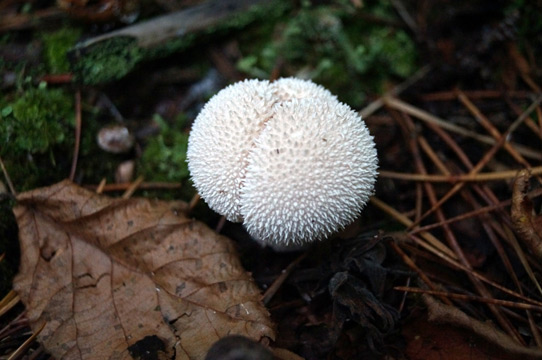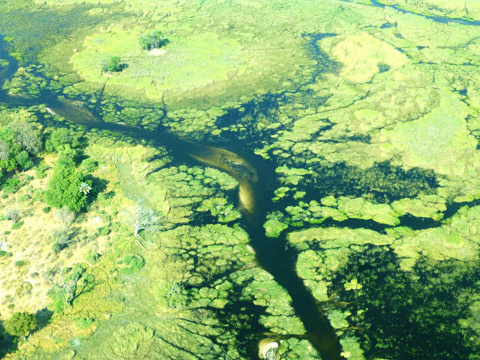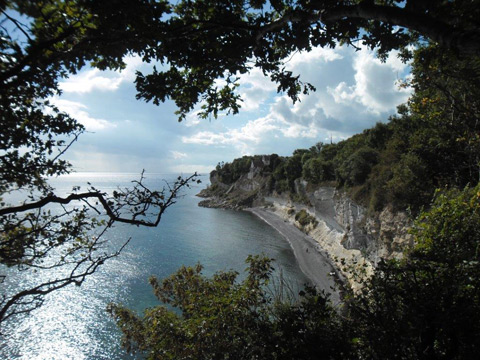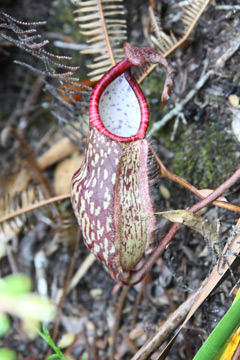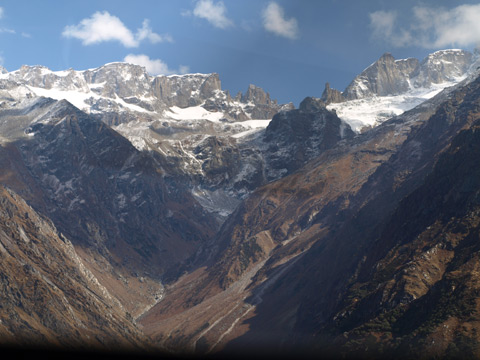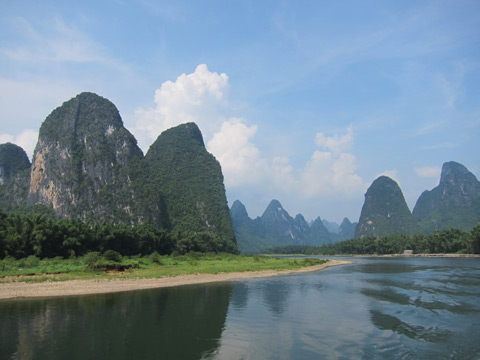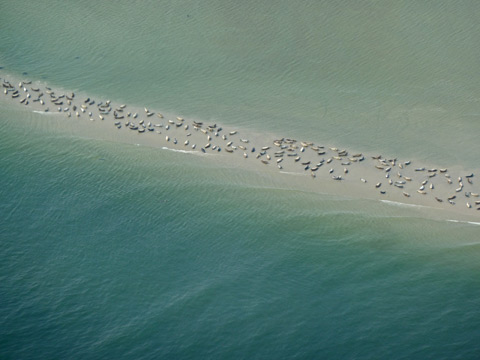Natural World Heritage reaches 228 sites, including 19 ‘in danger’
Delegates from over 100 governments met last month in Doha during the 38th World Heritage Committee meeting to take decisions on new and existing World Heritage sites. As usual, IUCN experts were there to give advice on natural World Heritage and the action needed to assure its conservation. The outcomes of the meeting are now available online in English and French.
More and bigger natural sites
Following IUCN’s advice, Botswana’s Okavango Delta – one of the biggest gaps on the World Heritage List, India’s Great Himalayan National Park Conservation Area, Philippines’ Mount Hamiguitan Range Wildlife Sanctuary and Denmark’s Stevns Klint were granted World Heritage status. Extensions of the South China Karst, the transboundary Bialowieza Forest and the Wadden Sea were also approved, as recommended by IUCN.
The prestigious World Heritage List now includes a total of 1007 sites, of which 228 are inscribed for their outstanding natural values.
The Okavango Delta in north-western Botswana was crowned as the 1000th World Heritage site. A vast fan-shaped plain, its extraordinary annual flood occurring in the dry season supports one of the greatest concentrations of wildlife in Africa, including threatened large mammals such as the Cheetah, the White and Black Rhinoceros and the Lion. It also provides livelihoods for thousands of people living in and around the delta, many of whom have conserved the area for generations.
Located in the Kullu district of India’s Himalayan state Himachal Pradesh, the Great Himalayan National Park is crucial for the conservation of Western Himalayan biodiversity, including a large number of medicinal plants and threatened species such as the Western Tragopan and the Musk Deer. The park is also a major source of water for the rural and urban areas in the region.
The Mount Hamiguitan Range Wildlife Sanctuary is a mountain ridge located in the southern part of the Philippines, on the island of Mindanao. It is home to many endemic species – species that are found nowhere else in the world, and in some cases nowhere else but this site – such as the Critically Endangered Philippine Cockatoo and the Philippine Eagle, the world’s second largest eagle and a symbol of the Philippines. The Sanctuary also contains a unique bonsai field or 'pygmy' forest of 100-year old trees.
Stevns Klint, a coastal cliff situated in eastern Denmark tells the story that the Earth was once hit by a meteorite, causing the end of the Age of Dinosaurs and leading to a mass extinction. Stevns Klint is the most significant and accessible site where the sedimentary record of the ash cloud formed by the meteorite can be seen.
The World Heritage Committee also added Viet Nam’s Trang An Landscape Complex to the list of mixed – natural and cultural – sites and approved the extension of Mexico’s Ancient Maya City and Protected Tropical Forests of Calakmul, Campeche. In both cases, IUCN had recognised the potential for listing, but advised that further work was needed to meet the high standards required by the World Heritage Convention. The two new sites now require follow-up monitoring reports within the next two years.
The proposed reduction of Australia’s Tasmanian Wilderness was refused by the World Heritage Committee, also following IUCN’s advice.
Growing concerns over illegal trade, development and mining
The World Heritage Committee also discussed the state of conservation of 61 existing natural sites, based on joint reports by IUCN and the World Heritage Centre. In the majority of cases, IUCN’s advice was followed.
Selous Game Reserve in Tanzania was listed as World Heritage in Danger due to unprecedented levels of poaching, as recommended by IUCN. A site the size of Switzerland, Selous now has a population of 13,000 elephants – 90% fewer than in 1982 when it was granted World Heritage status. The danger-listing was welcomed by Tanzania as a constructive move to mobilize urgent action, and IUCN and UNESCO will support the follow-up to this important decision.
The World Heritage Committee did not however follow IUCN’s advice to danger-list Dong Phayayen-Khao Yai Forest Complex in Thailand, despite deep concerns over illegal logging of precious wood, notably Siamese Rosewood, and life-threatening conditions for park staff.
Progress was made on Kenya’s Lake Turkana National Parks, which has been flagged by IUCN as ‘in danger’ for the last four years. IUCN and the World Heritage Centre are now expected on a field mission to Ethiopia, where a dam threatening Lake Turkana is under construction.
The World Heritage Committee strongly restated that World Heritage is incompatible with the extractive sector, a position also advocated by IUCN. This major threat comprising mining, oil and gas, and quarrying affects nearly half (27) of the natural sites examined by the Committee this year.
Virunga National Park in the DR Congo, Africa's oldest park, remains one of the most vulnerable sites exposed to oil threats. Concerns remain high over pressures on Virunga if oil resources are found to be viable, despite private sector commitments, including by Total and more recently SOCO. The latter oil company is now expected to formally confirm its ‘no-go’ commitment in World Heritage sites.
Find out more about IUCN’s contribution to the 38th World Heritage Committee meeting as the advisory body on nature here. All the Committee decisions are now available in English and French.
